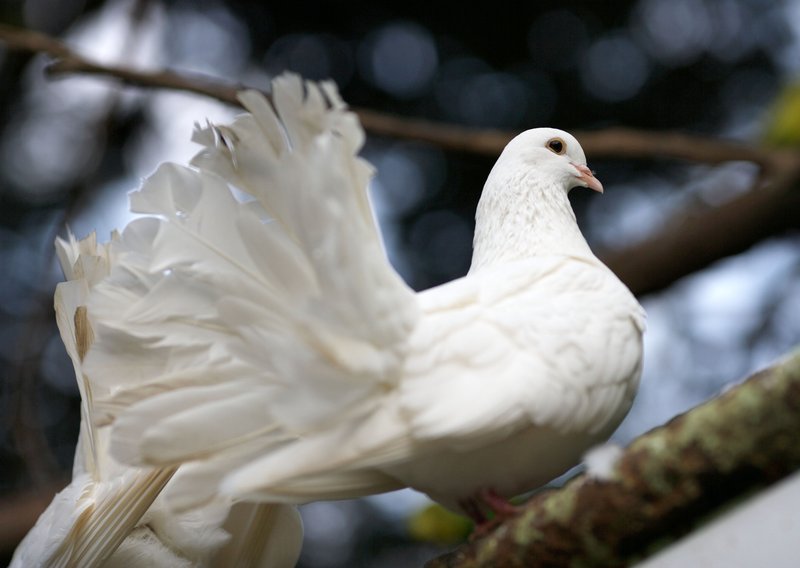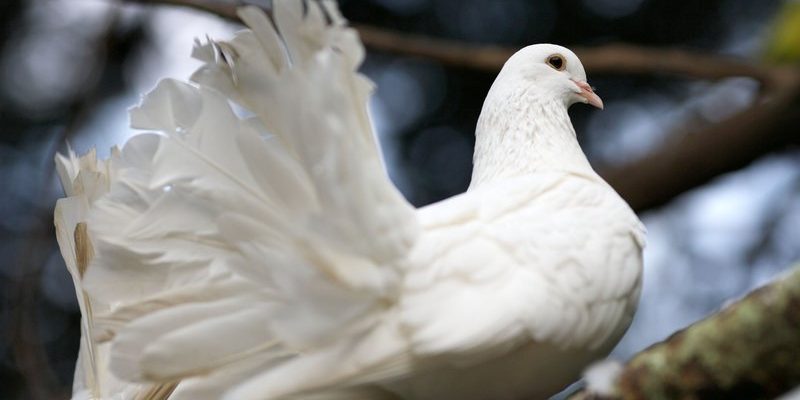
Imagine a bustling city with trees, parks, and a variety of wildlife. Doves are often a common sight, flitting from branch to branch and gracing us with their gentle presence. But in the wild, certain dove species are struggling to survive due to habitat loss, hunting, and predation. Understanding the status of these amazing birds helps us appreciate their role in our ecosystem and the importance of protecting them.
Understanding Dove Species
Doves belong to the family Columbidae, which includes around 300 species of birds. They are often characterized by their small to medium size, slender bodies, and pointed tails. While many people think of the common rock pigeon or the graceful mourning dove, there are plenty of other interesting species around the world.
Each dove species has its own unique traits and habitats. For instance, the Nicobar pigeon is known for its striking green and blue plumage, while the inca dove has a more subdued but equally charming look with its soft gray feathers. Unfortunately, not all species are so lucky to have balanced populations. Some specific types are finding it hard to survive in a world that’s rapidly changing.
Threats to Dove Populations
Doves are facing a multitude of threats that impact their survival. The most pressing issues include:
- Habitat loss: Deforestation, urbanization, and agricultural expansion lead to the destruction of natural habitats. Without a safe place to live, doves struggle to find food and shelter.
- Hunting: In some regions, doves are hunted for sport or food. This has drastically reduced their populations, especially for species that are already vulnerable.
- Predation: As their habitats diminish, doves become easier targets for predators, including domestic cats and birds of prey.
- Climate change: Shifts in the climate can alter food availability and nesting habitats, making life even tougher for doves.
You might be wondering how these threats stack up against each other. Honestly, they often combine to create a dire situation. When habitat is lost, doves not only lose their homes but are also exposed to more predators and less food. This vicious cycle can significantly impact dove populations.
The Status of Endangered Dove Species
The status of dove populations varies widely depending on the species. Some are thriving, while others are teetering on the edge of extinction. For example, the Spotted Dove is quite common in many urban areas of Asia, while the Dusky-headed Conure is listed as vulnerable due to habitat loss.
The International Union for Conservation of Nature (IUCN) maintains a Red List that categorizes species based on their risk of extinction. Here’s a quick breakdown of dove status:
- Least Concern: Common species like the rock pigeon fall into this category.
- Near Threatened: Species that may soon be at risk, like the Mourning Dove, can be found here.
- Vulnerable: Species facing a high risk of extinction, such as the Rufous Turtle Dove.
- Endangered: Some doves, like the Pink Pigeon, are critically endangered and need immediate protection efforts.
Protecting these endangered dove species is crucial not just for their survival but for the balance of the ecosystems they belong to.
Conservation Efforts for Doves
There are numerous conservation groups dedicated to protecting dove species and their habitats. From habitat restoration projects to legal protections against hunting, initiatives are in place to help these birds recover.
For instance, several organizations work to establish protected areas where doves can thrive. These areas often feature less human interference, allowing the birds to live and breed safely. Additionally, educational programs help raise awareness about the importance of doves and the threats they face.
You might also find community-based initiatives where locals engage in habitat restoration. By planting native trees and creating bird-friendly spaces, they can encourage dove populations to flourish. The more people know about the challenges doves face, the more likely they are to take action.
How You Can Help Dove Conservation
Want to get involved in helping doves? It’s easier than you think! Here are some ways to contribute:
- Support conservation organizations: Donating to wildlife preservation groups or participating in local conservation efforts can make a significant impact.
- Educate others: Share information about doves and the issues they face. Increasing awareness is key to conservation.
- Create bird-friendly spaces: If you have a garden or outdoor space, consider planting native plants that provide food and shelter for doves.
- Advocate for wildlife protection: Support policies and initiatives that protect dove habitats and restrict unsustainable hunting practices.
Even small actions can create ripples of change. When we come together to support these beautiful creatures, we help maintain our planet’s precious biodiversity.
The Importance of Doves in Our Ecosystem
Doves play a vital role in our ecosystems. They help maintain a balance by dispersing seeds and nutrients, which promotes plant growth. This not only aids in the regeneration of forests but also supports the entire food web that depends on those plants.
They also serve as indicators of environmental health. When dove populations decline, it can signal broader environmental issues that may affect other species, including humans. Their presence is a reminder of the interconnectedness of life on Earth.
Moreover, doves are not just natural beauties; they contribute to the emotional and cultural fabric of societies worldwide. From symbols of peace to beloved pets, their presence enriches our lives in numerous ways.
So, is the dove threatened or endangered? The answer depends on the specific species in question. While some doves are doing just fine, others are facing significant challenges that put them at risk. It’s important for us to understand these issues and take meaningful action to protect these incredible birds.
By supporting conservation efforts and raising awareness, each of us can contribute to creating a better future for doves and the ecosystems they inhabit. After all, isn’t it a joy to hear their gentle cooing in the morning? Let’s work together to ensure that this beautiful sound lives on for generations to come.

